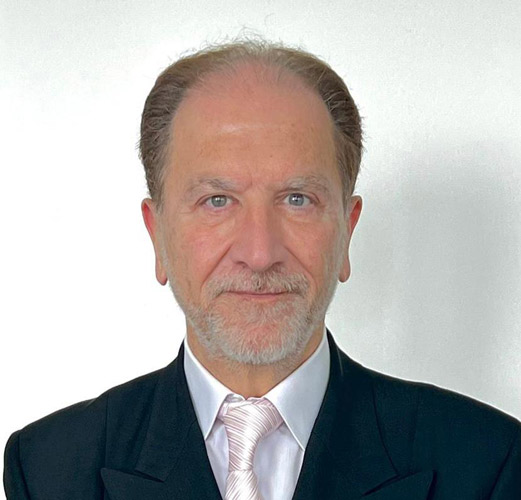
Strategic Tariffs, Tactical Allies: Mapping Post–Liberation Day Trade Zones
Since the launch of the United States’ “Liberation Day” tariffs on April 2, 2025, the global trade landscape has undergone a fundamental shift. What began as a protectionist escalation has evolved into a new era of investment-driven bilateralism, where trade relationships are increasingly shaped by deal-specific concessions linked to energy, capital, and geopolitical alignment, rather than by traditional rules-based multilateralism. This note analyzes the U.S.–Japan and U.S.–EU trade agreements as case studies in this emerging model, assesses their broader implications for strategic actors such as China, Saudi Arabia, the UAE, Canada, and Mexico, and identifies how these arrangements are redrawing the contours of global commerce.1 The analysis underscores a critical realignment, one where influence is traded for access, and where nations must negotiate relevance in an increasingly fragmented economic order.
I. The U.S.–Japan Agreement: Blueprint for a New Tariff Order
On July 23, 2025, the U.S. and Japan concluded a landmark trade agreement that set a new model for post-tariff trade normalization. Key features include:
- A 15% cap on U.S. tariffs on Japanese imports, replacing proposed 30–50% rates.
- $550 billion in Japanese investment pledges, spanning manufacturing, energy, and defense sectors.
- Removal of select non-tariff barriers, especially in autos, allowing U.S. vehicle standards to be recognized in Japan.
- Provisions for future alignment of regulations and digital trade rules, with ongoing discussions aimed at harmonizing standards in line with those outlined in the Indo-Pacific Economic Framework.2
Markets responded favorably, with the yen stabilizing and Japanese equity indices rising. This agreement represents both a template deal and a tactical de-escalation in an otherwise protectionist era.
II. The U.S.–EU Agreement: Stabilization at a Cost
Following Japan’s lead, the U.S.–EU deal announced on July 27 avoids a full-blown transatlantic trade war, but on more conservative terms:
- Introduction of a 15% baseline tariff on most EU goods, down from a threatened 30%
- “Zero-for-zero” exemptions on key sectors: aircraft, semiconductors, some pharmaceuticals, and energy-critical raw materials.
- The EU committed to $750 billion in U.S. energy imports especially LNG and hydrogen.
- The EU committed to invest $600 billion over a multi-year horizon in U.S.-based clean tech and industrial assets.
- Steel and aluminum tariffs remain at 50%, with discussions to convert these into quotas (pending finalization as of late July 2025).
- No clear U.S. commitments on reciprocal EU market access, prompting political criticism within the EU for perceived asymmetry [Source: European Parliament Briefing, July 26, 2025].
III. Implications for Other Strategic Actors
Canada and Mexico: Still Outside the Tent
- U.S. tariffs on Canadian and Mexican goods remain at 25%, particularly in autos and agriculture.
- Without similar investment-based offsets or exemptions, both economies face elevated recession risks, supply chain contractions, and reduced export competitiveness.
- Political pressure is mounting in Ottawa and Mexico City to demand comparable terms or pursue retaliatory WTO pathways.
China: Increasingly Isolated
- The deals with Japan and the EU increase diplomatic pressure on Beijing to negotiate.
- China still faces 30% tariffs across most sectors without a defined exit path.
- Lack of progress may harden U.S. rhetoric and embolden allies to ring-fence Chinese trade exposure under emerging “trusted partner” economic frameworks.
Saudi Arabia: Leveraging Energy Strength for Strategic Advantage
As the world’s leading energy exporter, Saudi Arabia remains a central player in the evolving global trade landscape, especially as energy becomes a cornerstone of strategic partnerships.
- The EU’s recent $750 billion energy commitment to the U.S., particularly in LNG, signals a diversification of supply. However, Saudi Arabia’s vast resources and investment in reliability and sustainability continue to offer a competitive edge.
- In response, Riyadh is accelerating Vision 2030 economic diplomacy, deepening partnerships with China, India, and ASEAN, and actively positioning itself as a long-term, trusted energy and investment partner.
- A potential Saudi–U.S. trade agreement, reportedly under discussion and potentially tied to clean energy and defense-industrial collaboration, could reinforce Saudi Arabia’s role in shaping the new trade architecture [Source: Reuters, July 2025].
- While global competition in LNG grows, Saudi Arabia’s influence remains strong, supported by its capacity for innovation, strategic foresight, and a clear commitment to economic transformation.
With robust energy assets, a rapidly evolving industrial base, and an ambitious reform agenda under Vision 2030, Saudi Arabia is well positioned to shape and lead within the emerging economic order. Its ability to blend traditional strength with forward-looking partnerships makes it a key force in defining the next chapter of global trade diplomacy.
United Arab Emirates: Advancing Strategic Agility in a Changing Trade Order
With its open, investment-driven economy, the United Arab Emirates is emerging as a regional leader in adapting to the global trade realignment. Its early shift toward digital trade, advanced logistics, renewable energy, and financial innovation provides the UAE with multiple strategic levers in shaping future trade dynamics.
- The UAE has avoided direct exposure to the U.S. Liberation Day tariffs, but its re-export and logistics networks face secondary effects from global trade rerouting, especially involving EU, U.S., and Asia-bound goods.
- In response to the U.S. pivot toward energy and capital alliances, the UAE has proactively diversified its investment relationships, strengthening ties with India, China, Japan, and the United Kingdom.
- The UAE is well positioned to act as a connector and broker for countries navigating new trade blocs, leveraging its world-class free zones, cutting-edge fintech ecosystem, and progressive data governance policies.
- Talks are underway for a UAE–U.S. digital trade and investment facilitation agreement, modeled partially on the IPEF and the CPTPP digital chapters.3 This would reinforce the UAE’s role as a strategic intermediary, not just a commodities player.
With a highly diversified economic base and a forward-looking trade strategy, the UAE continues to lead through agility and innovation, positioning itself as a key architect of regional and global economic integration.
IV. Insights and Strategic Interpretation
- The 15% Tariff Becomes the Benchmark. The U.S. has established 15% as the new baseline tariff, replacing full liberalization with a more controlled model that prioritizes investment-based conditionalities. This signals a lasting shift in trade expectations, where predictable tariffs are exchanged for strategic capital commitments.
- Investment Diplomacy Replaces Traditional Market Access. In contrast to past trade agreements built on mutual tariff elimination, the emerging framework prioritizes upfront strategic alignment. Countries now gain access through tangible commitments, be it in energy supply (EU), defense-industrial integration (Japan), or digital infrastructure and regulatory convergence (UAE). This approach reflects a move toward geoeconomic alignment over economic openness.
- Strategic Fragmentation of Global Trade. The global trade space is increasingly dividing into preferential blocs, where partners aligned with U.S. priorities are rewarded with tailored access. While countries such as Canada, Mexico, and China remain exposed to elevated tariffs, Saudi Arabia holds strong strategic leverage through its energy dominance and expanding geopolitical engagement. Meanwhile, the UAE showcases a proactive model of agility, leveraging diversification and digital diplomacy to secure its role in the evolving order.
V. Conclusion: Post–Liberation Day Realignment
Since the United States launched its “Liberation Day” tariffs on April 2, 2025, global trade has entered a period of managed fragmentation. The original wave of sweeping tariffs upended 30 years of multilateralism. What followed has not been full de-escalation, but transactional normalization via bilateral investment deals and tariff stabilization.
These recent agreements reveal:
- A world trading system splintered into preferential zones.
- Power increasingly shifting from multilateral consensus to bilateral leverage.
- Investment diplomacy as a substitute for rule-based globalization.
If this trend continues, the global economy may stabilize but under higher costs, lower transparency, and diminished rules-based governance. For remaining partners, the strategic priority is to both negotiate engagement within the new paradigm and strengthen alternative coalitions that preserve openness and balance in global trade.
1 All data and developments are current as of July 28, 2025, based on verified policy announcements and public-sector briefings from USTR, EU Commission, and independent news agencies.
2 IPEF standards refer to the rules, principles, and frameworks being developed under the Indo-Pacific Economic Framework for Prosperity (IPEF), a U.S.-led economic initiative launched in May 2022 to deepen economic engagement with Indo-Pacific countries without forming a traditional free trade agreement.
3 The Comprehensive and Progressive Agreement for Trans-Pacific Partnership (CPTPP) is a major regional trade agreement among 12 countries, including Japan, Canada, Australia, and the U.K., formed in 2018 after the U.S. withdrew from the original TPP. It eliminates 95% of tariffs among members and sets high-standard rules on digital trade, labor rights, environmental protection, and investor protections. Covering about 13–15% of global GDP, the CPTPP serves as a rules-based alternative to China’s RCEP and has become a key platform for trade integration and regulatory alignment in the Asia-Pacific region.
Our expert
Contact us
Subscribe to our newsletter
Subscribe now to receive our latest news

